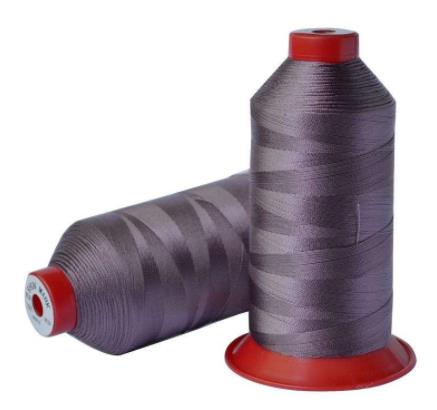What is the difference between nylon 66 and nylon 6?
The main type of nylon is aliphatic polyamide fiber, which can be composed of a monomer such as lactam or amino acid. At this moment, the Arabic numerals after the nylon name indicate the number of carbon atoms in the lactam or amino acid used, such as nylon 6, nylon 11, etc; It can also be composed of two monomers, namely a diamine and a diacid. At this moment, the two sets of Arabic numerals after the nylon title, the first set represents the number of carbon atoms in the diamine, and the second set represents the number of carbon atoms in the dicarboxylic acid, such as nylon 66, nylon 610, nylon 1010, etc. It is difficult to distinguish between nylon 6 and nylon 66 on the surface.
Nylon 6 products have characteristics such as high strength, wear resistance, softness, and a warm touch to the skin. They have a wide range of uses in the fields of clothing, silk, umbrellas, fishnet silk, curtain silk, BCF carpet silk, and engineering plastics. Generally speaking, the hand feel of nylon 66 is better than nylon 6, and the comfort of other nylon 66 is also better than nylon 6.

The polymerization degree of nylon 6 is 140-200, and the polymerization degree of nylon 66 is 55-77. The molecular chain of nylon contains a large number of amide groups, which can form attractive hydrogen bonds with the amide groups of adjacent molecular chains. The CH2-CH2- segment has excellent flexibility, and the molecular chain structure is relatively regular without large side groups. When the molecular chain is stretched, it is easy to form crystals with a crystallinity of 50% to 60%. Nylon is made by melt spinning method, and its shape under the microscope is similar to polyester, with a circular cross-section and a smooth and straight longitudinal direction. The density is relatively small, about 1.14g/cm3.
Performance of Nylon 66: | Performance of Nylon 6: |
1. High melting point (264 ° C) | 1. Low melting point (228 ° C) |
2. The crystalline structure is tightly packed | 2. Loose crystalline structure |
3. Very little affected by ozone and laughing gas | 3. Easy to fade under the action of ozone and laughing gas |
4. Difficult to dye | 4. Easy to dye |
5. Fibers have the best elasticity | 5. Poor elasticity of fibers |
6. Dense hand feel | 6. Soft to the touch |
7. The most suitable fiber for engineering | 7. Not suitable for engineering needs, unless implemented under the guarantee of SDN. |
Article source: Nylon colored yarn
-
05-27
The reason why fabrics containing spandex are prone to yellowing
Spandex is a commonly used fiber variety in our daily lives, characterized by good elasticity, low fineness, high elastic modulus (cracking elongation can reach 400-800), and low specific gravity. Spa
-
04-24
Colored non dyed nylon with synthetic fiber raw material
The current conventional fiber coloring mostly uses yarn dyeing method, which has long process, high loss, high cost, and the product has color difference and low color wash fastness. Yarn is prone to
-
03-26
What are the characteristics of non dyed spandex?
Non dyed spandex has also been widely used in recent years. Non dyed spandex fiber can be blended with fibers such as nylon, polyester, acrylic, cotton, wool, etc., which can give fabrics excellent el
-
02-24
The influence of yarn structure on fabrics
The basic characteristics of yarn include its appearance and shape, twisting characteristics, fiber transfer and distribution characteristics in the yarn, as well as the surface fuzz and internal loos
